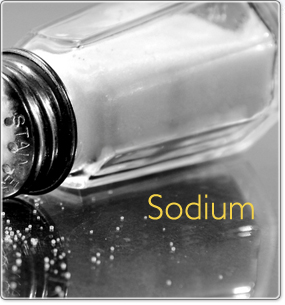The human body absorbs almost all sodium that gets eaten. Once absorbed, sodium becomes the major positive ion outside of cells in extracellular fluid and a key factor for retaining body water.
Sodium ions also function in nerve impulse conduction and absorption of some nutrients (e.g., glucose).
A dietary deficiency of sodium is rare. However, when it happens can lead to muscle cramps, nausea, vomiting, dizziness, and later, shock and coma.
The most common form of sodium is table salt, but at least a little bit of sodium occurs naturally in many foods. Significant sources sodium can be found in the majority of processed and preserved foodstuffs. Potato crisps and pretzels, hotdogs, ham and bacon, tomato salsas, ketchup, luncheon meats as well as canned soups are prime examples. Reduced amounts of sodium are present in various meats, poultry, eggs, nut products, fish and shellfish, carrots, beets, artichokes, cauliflower, celery and even dairy products. Given that countless food items that we consume already contain salt, it is not necessary to add even more before eating.
It is suggested in general to reduce sodium intake, mostly to limit the risk of developing high blood pressure later and to prevent calcium loss from your bones. It is recommended to have your blood pressure checked regularly. If you have hypertension, you should try to reduce your sodium intake to 2,400 milligrams per day.
Photo credit: gaetantremblay.blog.com/2012/01/21/why-is-sodium-or-salt-present-in-vitaminmineral-or-protein-shakes/


No comments:
Post a Comment